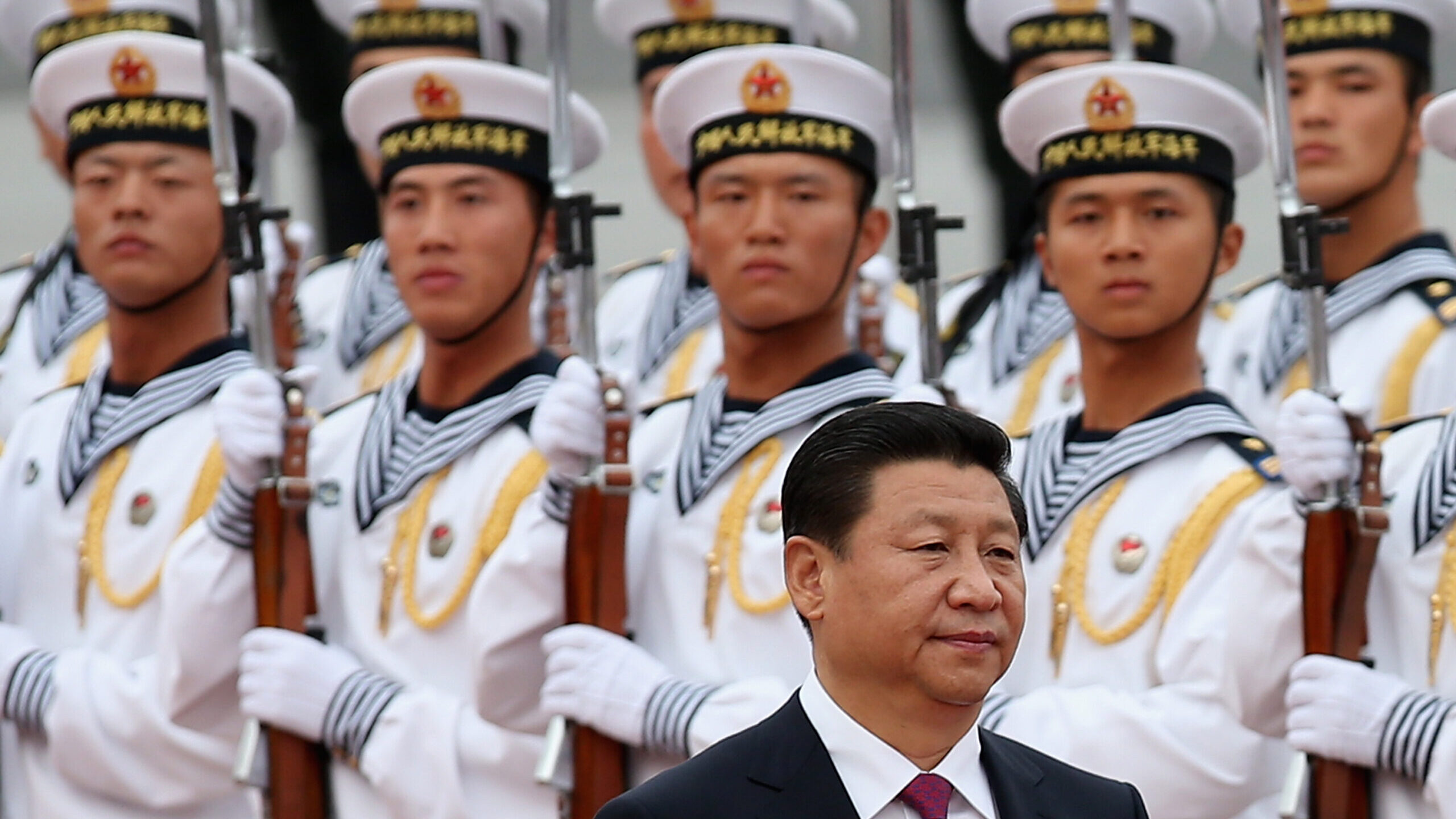
Chinese president Xi Jinping and a PLA Navy honor guard await the King of Bahrain (Photo by Feng Li/Getty Images)
WASHINGTON — Beijing completed construction on at least 300 intercontinental ballistic missile (ICBM) silos last year and “may” be eyeing development of a new conventionally armed missile system that could reach western US states, the Pentagon asserts in its latest China Military Power report.
This year’s unclassified US Department of Defense annual report on China’s military and security changes, published today [PDF], spans activities from 2022 and into 2023, and is not a grand departure from its previous iteration. However, the department notes that the People’s Republic of China (PRC) is continuing to grow its nuclear arsenal.
As of May 2023, Beijing had more than 500 operational nuclear warheads, and Washington is predicting that number will “likely” grow to more than 1,000 operational nuclear warheads by 2030, according to an executive summary of the report released to reporters. Those numbers broadly align with last year’s prediction that Beijing could produce some 1,500 nuclear weapons by 2035.
RELATED: In China’s military ‘purge,’ final outcomes remain to be seen
Additionally, the PRC completed construction on three new solid-propellant silo fields last year, which consists of at least 300 new intercontinental ballistic missile silos, DoD said.
“What we’d really like to see is for them to be more transparent about their nuclear buildup, and also to see some greater willingness on their part to discuss these strategic stability and risk reduction issues with us,” a senior defense official told reporters on Wednesday ahead of the report’s release.
“Looks like the PLA (People’s Liberation Army) have been busy on the nuclear front,” Meia Nouwens, head of the China program at the International Institute for Strategic Studies, said of the Pentagon’s reporting on the expanded nuclear program, adding that “some of” the intercontinental ballistic missile silos have now likely been loaded with weapons.
In addition to ramping up its nuclear arsenal over the past year-plus, DoD believes the PRC may be exploring development of a new, conventionally armed, intercontinental range missile systems that could strike targets in Hawaii, Alaska and inside the continental United States.
The senior defense official said this would be an expansion of its (relatively) short-range ballistic missile ambitions that have been expanding over the past two decades to include intermediate range ballistic missiles.
“It raises some questions about risks to strategic stability, which, again, I think, highlights the importance of having … direct conversations between the US and the PRC on these topics, which we’ll continue to pursue,” the official added.
When it comes to Taiwan, the report’s executive summary does not detail immediate concerns that the PRC plans to invade Taiwan. However, it notes that the PRC has “amplified diplomatic, political, and military pressure.” For example, it cites the PLA’s “increased provocative and destabilizing actions” in and around the Taiwan Strait to include ballistic missile overflights of Taiwan.
“The PLA practiced elements of each of its military courses of action against Taiwan during its August 2022 large-scale military exercise aimed at pressuring Taiwan, and again in April 2023 in response to Taiwan president Tsai Ing-wen’s transit of the United States,” the document said.
In addition to those developments, the DoD report notes:
- The PLA is continuing to modernize equipment and focus on combined arms and joint training. In August 2022, the PLAA demonstrated a “new long-range fire capability” in response to the August 2022 US Congressional Delegation visit to Taiwan.
- When it comes to the People’s Liberation Army Navy (PLAN), Beijing “numerically” has the largest navy in the world with more than 370 ships and submarines, to include more than 140 major surface combatants. In 2022, the PLAN launched its third aircraft carrier, CV-18 Fujian, and commissioned its third YUSHEN class Amphibious Assault Ships (LHA). It “likely” began construction on a fourth in early 2023.
- As of the People’s Liberation Army Air Force (PLAAF) and PLAN aviation, together they constitute the largest aviation force in the Indo-Pacific region. The PLAAF continues its modernization ambitions with the delivery of domestically built aircraft and a wide range of aerial drones.
Breaking Defense’s Colin Clark contributed to this reporting from Sydney.






















